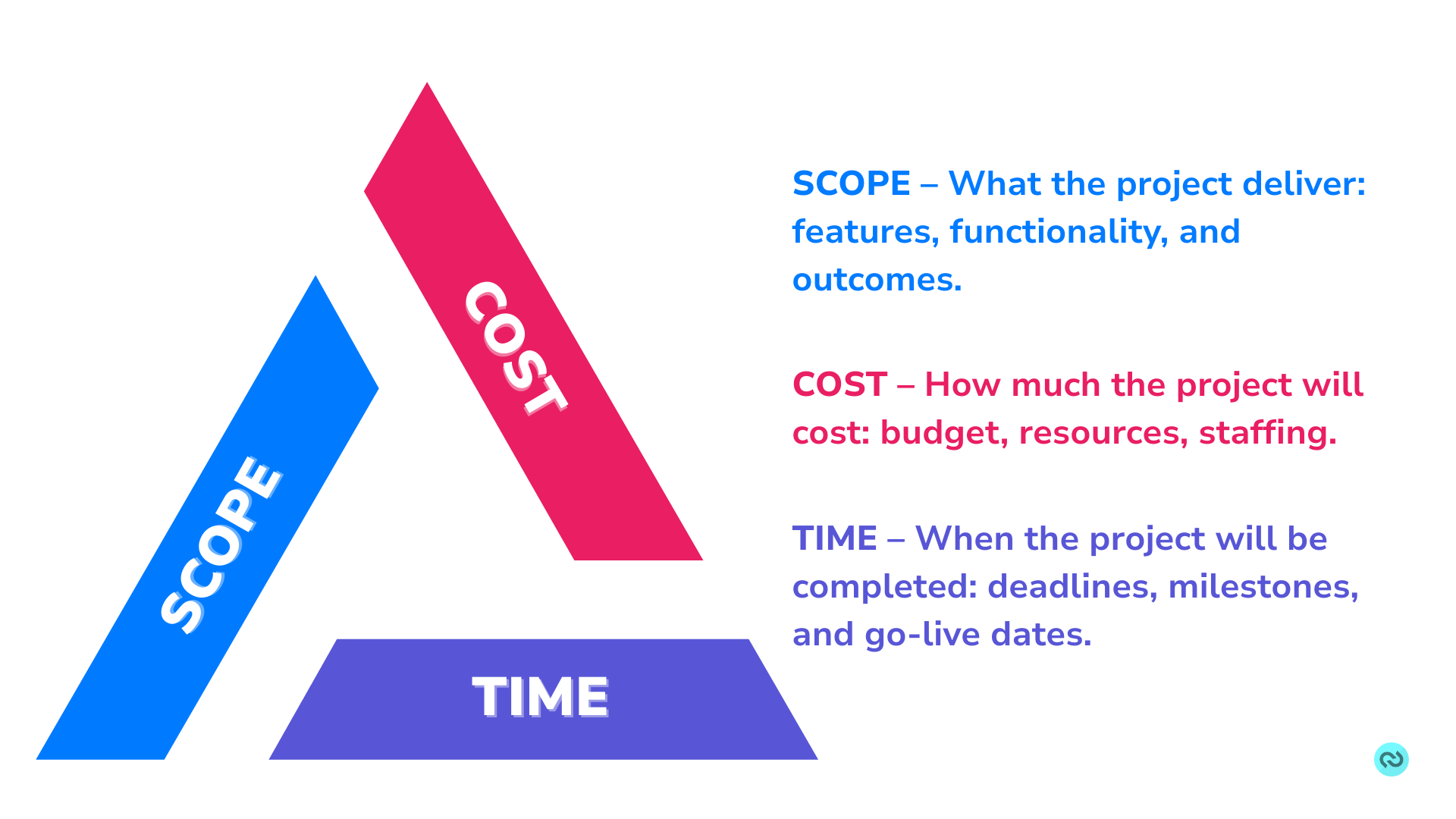Using the Triple Constraint to Guide Health IT Projects
Discover how the Triple Constraint of scope, time, and cost shapes health IT projects, and how it can guide better decisions and project outcomes.

You’re three months into an EHR upgrade project when leadership asks, “Can we integrate the new ICU monitors and go live with that at the same time?” It sounds like a reasonable question, but if you’ve ever coordinated or managed a large IT project, you know this is where the trade-offs begin.
When you’re responsible for delivering major changes, requests rarely stop. Go faster. Add more. Spend less. Sometimes, all three pressures show up at once. Without a clear way to explain how these factors connect, it becomes easy for conversations to drift into frustration or unrealistic expectations.
This is where the Triple Constraint becomes useful. Also called the Project Triangle, it offers a straightforward way to show how scope, cost, and time are linked. In health IT, where patient safety, regulatory deadlines, and continuous operations are part of the environment, understanding these links is essential for making sound decisions and keeping projects on track.
What is the Triple Constraint?
The Triple Constraint is a core project management concept that says every project is shaped by three connected factors: scope, cost, and time. Change one, and the others are affected. Picture a triangle. Each side represents one constraint. If you pull one side longer, the others must adjust to keep the triangle intact. You can focus on two, but the third will shift as a result.

Some variations include quality at the centre, reflecting how all three constraints affect it. Others replace cost with resources, which accounts for people, skills, and equipment as well as money. Regardless of the variation, the principle stays the same: changing one factor always impacts the others.
The Triple Constraint in Health IT
In healthcare, flexibility is often limited. Compliance and reporting deadlines rarely move; budgets are typically fixed; IT and operational teams are already stretched across competing priorities. With time, cost, and resources tightly constrained, scope often becomes the only adjustable factor. Adding more without changing the others usually means trade-offs in areas like testing, training, or adoption readiness—all of which can affect care delivery downstream.
The impact shows up quickly in real projects. An interoperability initiative might have a fixed budget with an immovable regulatory deadline. With time and cost locked in, scope becomes the variable, which may lead to a phased rollout that delivers core functionality first while deferring enhancements. A telehealth launch may face a different challenge: pressure to go live quickly with limited resources. In that case, scope is reduced at the outset to match what the team can deliver. In both situations, the Triple Constraint keeps the focus on what is fixed, where flexibility exists, and how to make choices without putting safety or quality at risk.
Bringing the Triple Constraint into everyday project conversations helps make decision-making more transparent. It also shifts discussions from “can we do it?” to “what will change if we do it?”
Identify Non Negotiables
Confirm early which constraints can’t shift, such as compliance deadlines, safety standards, or budget caps, and where adjustments might be possible.
Make Trade-Offs Visible
Show how scope, time, and costs connect. When requests come in, highlight exactly how the other factors will be affected.
Build It Into Your Process
Include constraint discussions in project updates and change meetings, so trade-offs are intentional, not accidental.
Educate Stakeholders
Help leaders and team members understand how scope, time, and cost interact. Use examples that are relevant to their roles and priorities.
✏️ Tools and Templates that Help
➡️ Project charters that define constraints
➡️ Change request forms that address all three areas
➡️ Simple diagrams for stakeholder presentations
➡️ Standard templates for documenting trade-off decisions
📌 Tips for Success
✅ Start constraint conversations early
✅ Be specific about impacts
✅ Keep a record of decisions and their rationale
✅ Recognize good trade-off decisions, even if timelines shift
Trade-offs are part of every complex project, and in health IT, they carry higher stakes. The Triple Constraint isn’t about saying “no.” It’s about making choices that keep scope, cost, and time in balance without putting safety or quality at risk.
If you’d like to explore how others are applying this in their health IT work, the conversation continues inside the Draegan Network.

